-
TABLE OF CONTENTS\r\n \r\n \r\n1. EXECUTIVE SUMMARY \r\n1.1. Market Overview \r\n1.2. Key Findings \r\n1.3. Market Segmentation \r\n1.4. Competitive Landscape \r\n1.5. Challenges and Opportunities \r\n1.6. Future Outlook \r\n \r\n \r\n2. MARKET INTRODUCTION \r\n2.1. Definition \r\n2.2. Scope of the study \r\n2.2.1. Research Objective \r\n2.2.2. Assumption \r\n2.2.3. Limitations \r\n3. RESEARCH METHODOLOGY \r\n3.1. Overview \r\n3.2. Data Mining \r\n3.3. Secondary Research \r\n3.4. Primary Research \r\n3.4.1. Primary Interviews and Information Gathering Process \r\n3.4.2. Breakdown of Primary Respondents \r\n3.5. Forecasting Model \r\n3.6. Market Size Estimation \r\n3.6.1. Bottom-Up Approach \r\n3.6.2. Top-Down Approach \r\n3.7. Data Triangulation \r\n3.8. Validation \r\n \r\n \r\n \r\n4. MARKET DYNAMICS \r\n4.1. Overview \r\n4.2. Drivers \r\n4.3. Restraints \r\n4.4. Opportunities \r\n5. MARKET FACTOR ANALYSIS \r\n5.1. Value chain Analysis \r\n5.2. Porter's Five Forces Analysis \r\n5.2.1. Bargaining Power of Suppliers \r\n5.2.2. Bargaining Power of Buyers \r\n5.2.3. Threat of New Entrants \r\n5.2.4. Threat of Substitutes \r\n5.2.5. Intensity of Rivalry \r\n5.3. COVID-19 Impact Analysis \r\n5.3.1. Market Impact Analysis \r\n5.3.2. Regional Impact \r\n5.3.3. Opportunity and Threat Analysis \r\n \r\n \r\n \r\n6. CONDUCTIVE INKS MARKET, BY APPLICATION (USD BILLION) \r\n6.1. Printed Electronics \r\n6.2. Solar Cells \r\n6.3. Flexible Displays \r\n6.4. Smart Textiles \r\n7. CONDUCTIVE INKS MARKET, BY COMPOSITION (USD BILLION) \r\n7.1. Carbon-Based Inks \r\n7.2. Metal-Based Inks \r\n7.3. Polymer-Based Inks \r\n8. CONDUCTIVE INKS MARKET, BY TECHNIQUE (USD BILLION) \r\n8.1. Screen Printing \r\n8.2. Inkjet Printing \r\n8.3. Flexographic Printing \r\n8.4. gravure Printing \r\n9. CONDUCTIVE INKS MARKET, BY END USE (USD BILLION) \r\n9.1. Consumer Electronics \r\n9.2. Automotive \r\n9.3. Healthcare \r\n9.4. Aerospace \r\n10. CONDUCTIVE INKS MARKET, BY REGIONAL (USD BILLION) \r\n10.1. North America \r\n10.1.1. US \r\n10.1.2. Canada \r\n10.2. Europe \r\n10.2.1. Germany \r\n10.2.2. UK \r\n10.2.3. France \r\n10.2.4. Russia \r\n10.2.5. Italy \r\n10.2.6. Spain \r\n10.2.7. Rest of Europe \r\n10.3. APAC \r\n10.3.1. China \r\n10.3.2. India \r\n10.3.3. Japan \r\n10.3.4. South Korea \r\n10.3.5. Malaysia \r\n10.3.6. Thailand \r\n10.3.7. Indonesia \r\n10.3.8. Rest of APAC \r\n10.4. South America \r\n10.4.1. Brazil \r\n10.4.2. Mexico \r\n10.4.3. Argentina \r\n10.4.4. Rest of South America \r\n10.5. MEA \r\n10.5.1. GCC Countries \r\n10.5.2. South Africa \r\n10.5.3. Rest of MEA \r\n \r\n \r\n \r\n11. COMPETITIVE LANDSCAPE \r\n11.1. Overview \r\n11.2. Competitive Analysis \r\n11.3. Market share Analysis \r\n11.4. Major Growth Strategy in the Conductive Inks Market \r\n11.5. Competitive Benchmarking \r\n11.6. Leading Players in Terms of Number of Developments in the Conductive Inks Market \r\n11.7. Key developments and growth strategies \r\n11.7.1. New Product Launch/Service Deployment \r\n11.7.2. Merger & Acquisitions \r\n11.7.3. Joint Ventures \r\n11.8. Major Players Financial Matrix \r\n11.8.1. Sales and Operating Income \r\n11.8.2. Major Players R&D Expenditure. 2023 \r\n12. COMPANY PROFILES \r\n12.1. AgfaGevaert \r\n12.1.1. Financial Overview \r\n12.1.2. Products Offered \r\n12.1.3. Key Developments \r\n12.1.4. SWOT Analysis \r\n12.1.5. Key Strategies \r\n12.2. DuPont \r\n12.2.1. Financial Overview \r\n12.2.2. Products Offered \r\n12.2.3. Key Developments \r\n12.2.4. SWOT Analysis \r\n12.2.5. Key Strategies \r\n12.3. Hugh O'Kane \r\n12.3.1. Financial Overview \r\n12.3.2. Products Offered \r\n12.3.3. Key Developments \r\n12.3.4. SWOT Analysis \r\n12.3.5. Key Strategies \r\n12.4. Mitsubishi Chemical \r\n12.4.1. Financial Overview \r\n12.4.2. Products Offered \r\n12.4.3. Key Developments \r\n12.4.4. SWOT Analysis \r\n12.4.5. Key Strategies \r\n12.5. Avery Dennison \r\n12.5.1. Financial Overview \r\n12.5.2. Products Offered \r\n12.5.3. Key Developments \r\n12.5.4. SWOT Analysis \r\n12.5.5. Key Strategies \r\n12.6. Creative Materials \r\n12.6.1. Financial Overview \r\n12.6.2. Products Offered \r\n12.6.3. Key Developments \r\n12.6.4. SWOT Analysis \r\n12.6.5. Key Strategies \r\n12.7. Parker Hannifin \r\n12.7.1. Financial Overview \r\n12.7.2. Products Offered \r\n12.7.3. Key Developments \r\n12.7.4. SWOT Analysis \r\n12.7.5. Key Strategies \r\n12.8. Cypress Industries \r\n12.8.1. Financial Overview \r\n12.8.2. Products Offered \r\n12.8.3. Key Developments \r\n12.8.4. SWOT Analysis \r\n12.8.5. Key Strategies \r\n12.9. Grafen \r\n12.9.1. Financial Overview \r\n12.9.2. Products Offered \r\n12.9.3. Key Developments \r\n12.9.4. SWOT Analysis \r\n12.9.5. Key Strategies \r\n12.10. InkTec \r\n12.10.1. Financial Overview \r\n12.10.2. Products Offered \r\n12.10.3. Key Developments \r\n12.10.4. SWOT Analysis \r\n12.10.5. Key Strategies \r\n12.11. Kodak \r\n12.11.1. Financial Overview \r\n12.11.2. Products Offered \r\n12.11.3. Key Developments \r\n12.11.4. SWOT Analysis \r\n12.11.5. Key Strategies \r\n12.12. Henkel \r\n12.12.1. Financial Overview \r\n12.12.2. Products Offered \r\n12.12.3. Key Developments \r\n12.12.4. SWOT Analysis \r\n12.12.5. Key Strategies \r\n12.13. Applied Materials \r\n12.13.1. Financial Overview \r\n12.13.2. Products Offered \r\n12.13.3. Key Developments \r\n12.13.4. SWOT Analysis \r\n12.13.5. Key Strategies \r\n12.14. Sun Chemical \r\n12.14.1. Financial Overview \r\n12.14.2. Products Offered \r\n12.14.3. Key Developments \r\n12.14.4. SWOT Analysis \r\n12.14.5. Key Strategies \r\n12.15. NovaCentrix \r\n12.15.1. Financial Overview \r\n12.15.2. Products Offered \r\n12.15.3. Key Developments \r\n12.15.4. SWOT Analysis \r\n12.15.5. Key Strategies \r\n13.
-
APPENDIX \r\n13.1.
-
References \r\n13.2. Related Reports \r\nLIST OF TABLES\r\n \r\nTABLE
-
LIST OF ASSUMPTIONS \r\nTABLE
-
NORTH AMERICA CONDUCTIVE INKS MARKET SIZE ESTIMATES & FORECAST, BY APPLICATION, 2019-2035 (USD BILLIONS) \r\nTABLE
-
NORTH AMERICA CONDUCTIVE INKS MARKET SIZE ESTIMATES & FORECAST, BY COMPOSITION, 2019-2035 (USD BILLIONS) \r\nTABLE
-
NORTH AMERICA CONDUCTIVE INKS MARKET SIZE ESTIMATES & FORECAST, BY TECHNIQUE, 2019-2035 (USD BILLIONS) \r\nTABLE
-
NORTH AMERICA CONDUCTIVE INKS MARKET SIZE ESTIMATES & FORECAST, BY END USE, 2019-2035 (USD BILLIONS) \r\nTABLE
-
NORTH AMERICA CONDUCTIVE INKS MARKET SIZE ESTIMATES & FORECAST, BY REGIONAL, 2019-2035 (USD BILLIONS) \r\nTABLE
-
US CONDUCTIVE INKS MARKET SIZE ESTIMATES & FORECAST, BY APPLICATION, 2019-2035 (USD BILLIONS) \r\nTABLE
-
US CONDUCTIVE INKS MARKET SIZE ESTIMATES & FORECAST, BY COMPOSITION, 2019-2035 (USD BILLIONS) \r\nTABLE
-
US CONDUCTIVE INKS MARKET SIZE ESTIMATES & FORECAST, BY TECHNIQUE, 2019-2035 (USD BILLIONS) \r\nTABLE
-
US CONDUCTIVE INKS MARKET SIZE ESTIMATES & FORECAST, BY END USE, 2019-2035 (USD BILLIONS) \r\nTABLE
-
US CONDUCTIVE INKS MARKET SIZE ESTIMATES & FORECAST, BY REGIONAL, 2019-2035 (USD BILLIONS) \r\nTABLE
-
CANADA CONDUCTIVE INKS MARKET SIZE ESTIMATES & FORECAST, BY APPLICATION, 2019-2035 (USD BILLIONS) \r\nTABLE
-
CANADA CONDUCTIVE INKS MARKET SIZE ESTIMATES & FORECAST, BY COMPOSITION, 2019-2035 (USD BILLIONS) \r\nTABLE
-
CANADA CONDUCTIVE INKS MARKET SIZE ESTIMATES & FORECAST, BY TECHNIQUE, 2019-2035 (USD BILLIONS) \r\nTABLE
-
CANADA CONDUCTIVE INKS MARKET SIZE ESTIMATES & FORECAST, BY END USE, 2019-2035 (USD BILLIONS) \r\nTABLE
-
CANADA CONDUCTIVE INKS MARKET SIZE ESTIMATES & FORECAST, BY REGIONAL, 2019-2035 (USD BILLIONS) \r\nTABLE
-
EUROPE CONDUCTIVE INKS MARKET SIZE ESTIMATES & FORECAST, BY APPLICATION, 2019-2035 (USD BILLIONS) \r\nTABLE
-
EUROPE CONDUCTIVE INKS MARKET SIZE ESTIMATES & FORECAST, BY COMPOSITION, 2019-2035 (USD BILLIONS) \r\nTABLE
-
EUROPE CONDUCTIVE INKS MARKET SIZE ESTIMATES & FORECAST, BY TECHNIQUE, 2019-2035 (USD BILLIONS) \r\nTABLE
-
EUROPE CONDUCTIVE INKS MARKET SIZE ESTIMATES & FORECAST, BY END USE, 2019-2035 (USD BILLIONS) \r\nTABLE
-
EUROPE CONDUCTIVE INKS MARKET SIZE ESTIMATES & FORECAST, BY REGIONAL, 2019-2035 (USD BILLIONS) \r\nTABLE
-
GERMANY CONDUCTIVE INKS MARKET SIZE ESTIMATES & FORECAST, BY APPLICATION, 2019-2035 (USD BILLIONS) \r\nTABLE
-
GERMANY CONDUCTIVE INKS MARKET SIZE ESTIMATES & FORECAST, BY COMPOSITION, 2019-2035 (USD BILLIONS) \r\nTABLE
-
GERMANY CONDUCTIVE INKS MARKET SIZE ESTIMATES & FORECAST, BY TECHNIQUE, 2019-2035 (USD BILLIONS) \r\nTABLE
-
GERMANY CONDUCTIVE INKS MARKET SIZE ESTIMATES & FORECAST, BY END USE, 2019-2035 (USD BILLIONS) \r\nTABLE
-
GERMANY CONDUCTIVE INKS MARKET SIZE ESTIMATES & FORECAST, BY REGIONAL, 2019-2035 (USD BILLIONS) \r\nTABLE
-
UK CONDUCTIVE INKS MARKET SIZE ESTIMATES & FORECAST, BY APPLICATION, 2019-2035 (USD BILLIONS) \r\nTABLE
-
UK CONDUCTIVE INKS MARKET SIZE ESTIMATES & FORECAST, BY COMPOSITION, 2019-2035 (USD BILLIONS) \r\nTABLE
-
UK CONDUCTIVE INKS MARKET SIZE ESTIMATES & FORECAST, BY TECHNIQUE, 2019-2035 (USD BILLIONS) \r\nTABLE
-
UK CONDUCTIVE INKS MARKET SIZE ESTIMATES & FORECAST, BY END USE, 2019-2035 (USD BILLIONS) \r\nTABLE
-
UK CONDUCTIVE INKS MARKET SIZE ESTIMATES & FORECAST, BY REGIONAL, 2019-2035 (USD BILLIONS) \r\nTABLE
-
FRANCE CONDUCTIVE INKS MARKET SIZE ESTIMATES & FORECAST, BY APPLICATION, 2019-2035 (USD BILLIONS) \r\nTABLE
-
FRANCE CONDUCTIVE INKS MARKET SIZE ESTIMATES & FORECAST, BY COMPOSITION, 2019-2035 (USD BILLIONS) \r\nTABLE
-
FRANCE CONDUCTIVE INKS MARKET SIZE ESTIMATES & FORECAST, BY TECHNIQUE, 2019-2035 (USD BILLIONS) \r\nTABLE
-
FRANCE CONDUCTIVE INKS MARKET SIZE ESTIMATES & FORECAST, BY END USE, 2019-2035 (USD BILLIONS) \r\nTABLE
-
FRANCE CONDUCTIVE INKS MARKET SIZE ESTIMATES & FORECAST, BY REGIONAL, 2019-2035 (USD BILLIONS) \r\nTABLE
-
RUSSIA CONDUCTIVE INKS MARKET SIZE ESTIMATES & FORECAST, BY APPLICATION, 2019-2035 (USD BILLIONS) \r\nTABLE
-
RUSSIA CONDUCTIVE INKS MARKET SIZE ESTIMATES & FORECAST, BY COMPOSITION, 2019-2035 (USD BILLIONS) \r\nTABLE
-
RUSSIA CONDUCTIVE INKS MARKET SIZE ESTIMATES & FORECAST, BY TECHNIQUE, 2019-2035 (USD BILLIONS) \r\nTABLE
-
RUSSIA CONDUCTIVE INKS MARKET SIZE ESTIMATES & FORECAST, BY END USE, 2019-2035 (USD BILLIONS) \r\nTABLE
-
RUSSIA CONDUCTIVE INKS MARKET SIZE ESTIMATES & FORECAST, BY REGIONAL, 2019-2035 (USD BILLIONS) \r\nTABLE
-
ITALY CONDUCTIVE INKS MARKET SIZE ESTIMATES & FORECAST, BY APPLICATION, 2019-2035 (USD BILLIONS) \r\nTABLE
-
ITALY CONDUCTIVE INKS MARKET SIZE ESTIMATES & FORECAST, BY COMPOSITION, 2019-2035 (USD BILLIONS) \r\nTABLE
-
ITALY CONDUCTIVE INKS MARKET SIZE ESTIMATES & FORECAST, BY TECHNIQUE, 2019-2035 (USD BILLIONS) \r\nTABLE
-
ITALY CONDUCTIVE INKS MARKET SIZE ESTIMATES & FORECAST, BY END USE, 2019-2035 (USD BILLIONS) \r\nTABLE
-
ITALY CONDUCTIVE INKS MARKET SIZE ESTIMATES & FORECAST, BY REGIONAL, 2019-2035 (USD BILLIONS) \r\nTABLE
-
SPAIN CONDUCTIVE INKS MARKET SIZE ESTIMATES & FORECAST, BY APPLICATION, 2019-2035 (USD BILLIONS) \r\nTABLE
-
SPAIN CONDUCTIVE INKS MARKET SIZE ESTIMATES & FORECAST, BY COMPOSITION, 2019-2035 (USD BILLIONS) \r\nTABLE
-
SPAIN CONDUCTIVE INKS MARKET SIZE ESTIMATES & FORECAST, BY TECHNIQUE, 2019-2035 (USD BILLIONS) \r\nTABLE
-
SPAIN CONDUCTIVE INKS MARKET SIZE ESTIMATES & FORECAST, BY END USE, 2019-2035 (USD BILLIONS) \r\nTABLE
-
SPAIN CONDUCTIVE INKS MARKET SIZE ESTIMATES & FORECAST, BY REGIONAL, 2019-2035 (USD BILLIONS) \r\nTABLE
-
REST OF EUROPE CONDUCTIVE INKS MARKET SIZE ESTIMATES & FORECAST, BY APPLICATION, 2019-2035 (USD BILLIONS) \r\nTABLE
-
REST OF EUROPE CONDUCTIVE INKS MARKET SIZE ESTIMATES & FORECAST, BY COMPOSITION, 2019-2035 (USD BILLIONS) \r\nTABLE
-
REST OF EUROPE CONDUCTIVE INKS MARKET SIZE ESTIMATES & FORECAST, BY TECHNIQUE, 2019-2035 (USD BILLIONS) \r\nTABLE
-
REST OF EUROPE CONDUCTIVE INKS MARKET SIZE ESTIMATES & FORECAST, BY END USE, 2019-2035 (USD BILLIONS) \r\nTABLE
-
REST OF EUROPE CONDUCTIVE INKS MARKET SIZE ESTIMATES & FORECAST, BY REGIONAL, 2019-2035 (USD BILLIONS) \r\nTABLE
-
APAC CONDUCTIVE INKS MARKET SIZE ESTIMATES & FORECAST, BY APPLICATION, 2019-2035 (USD BILLIONS) \r\nTABLE
-
APAC CONDUCTIVE INKS MARKET SIZE ESTIMATES & FORECAST, BY COMPOSITION, 2019-2035 (USD BILLIONS) \r\nTABLE
-
APAC CONDUCTIVE INKS MARKET SIZE ESTIMATES & FORECAST, BY TECHNIQUE, 2019-2035 (USD BILLIONS) \r\nTABLE
-
APAC CONDUCTIVE INKS MARKET SIZE ESTIMATES & FORECAST, BY END USE, 2019-2035 (USD BILLIONS) \r\nTABLE
-
APAC CONDUCTIVE INKS MARKET SIZE ESTIMATES & FORECAST, BY REGIONAL, 2019-2035 (USD BILLIONS) \r\nTABLE
-
CHINA CONDUCTIVE INKS MARKET SIZE ESTIMATES & FORECAST, BY APPLICATION, 2019-2035 (USD BILLIONS) \r\nTABLE
-
CHINA CONDUCTIVE INKS MARKET SIZE ESTIMATES & FORECAST, BY COMPOSITION, 2019-2035 (USD BILLIONS) \r\nTABLE
-
CHINA CONDUCTIVE INKS MARKET SIZE ESTIMATES & FORECAST, BY TECHNIQUE, 2019-2035 (USD BILLIONS) \r\nTABLE
-
CHINA CONDUCTIVE INKS MARKET SIZE ESTIMATES & FORECAST, BY END USE, 2019-2035 (USD BILLIONS) \r\nTABLE
-
CHINA CONDUCTIVE INKS MARKET SIZE ESTIMATES & FORECAST, BY REGIONAL, 2019-2035 (USD BILLIONS) \r\nTABLE
-
INDIA CONDUCTIVE INKS MARKET SIZE ESTIMATES & FORECAST, BY APPLICATION, 2019-2035 (USD BILLIONS) \r\nTABLE
-
INDIA CONDUCTIVE INKS MARKET SIZE ESTIMATES & FORECAST, BY COMPOSITION, 2019-2035 (USD BILLIONS) \r\nTABLE
-
INDIA CONDUCTIVE INKS MARKET SIZE ESTIMATES & FORECAST, BY TECHNIQUE, 2019-2035 (USD BILLIONS) \r\nTABLE
-
INDIA CONDUCTIVE INKS MARKET SIZE ESTIMATES & FORECAST, BY END USE, 2019-2035 (USD BILLIONS) \r\nTABLE
-
INDIA CONDUCTIVE INKS MARKET SIZE ESTIMATES & FORECAST, BY REGIONAL, 2019-2035 (USD BILLIONS) \r\nTABLE
-
JAPAN CONDUCTIVE INKS MARKET SIZE ESTIMATES & FORECAST, BY APPLICATION, 2019-2035 (USD BILLIONS) \r\nTABLE
-
JAPAN CONDUCTIVE INKS MARKET SIZE ESTIMATES & FORECAST, BY COMPOSITION, 2019-2035 (USD BILLIONS) \r\nTABLE
-
JAPAN CONDUCTIVE INKS MARKET SIZE ESTIMATES & FORECAST, BY TECHNIQUE, 2019-2035 (USD BILLIONS) \r\nTABLE
-
JAPAN CONDUCTIVE INKS MARKET SIZE ESTIMATES & FORECAST, BY END USE, 2019-2035 (USD BILLIONS) \r\nTABLE
-
JAPAN CONDUCTIVE INKS MARKET SIZE ESTIMATES & FORECAST, BY REGIONAL, 2019-2035 (USD BILLIONS) \r\nTABLE
-
SOUTH KOREA CONDUCTIVE INKS MARKET SIZE ESTIMATES & FORECAST, BY APPLICATION, 2019-2035 (USD BILLIONS) \r\nTABLE
-
SOUTH KOREA CONDUCTIVE INKS MARKET SIZE ESTIMATES & FORECAST, BY COMPOSITION, 2019-2035 (USD BILLIONS) \r\nTABLE
-
SOUTH KOREA CONDUCTIVE INKS MARKET SIZE ESTIMATES & FORECAST, BY TECHNIQUE, 2019-2035 (USD BILLIONS) \r\nTABLE
-
SOUTH KOREA CONDUCTIVE INKS MARKET SIZE ESTIMATES & FORECAST, BY END USE, 2019-2035 (USD BILLIONS) \r\nTABLE
-
SOUTH KOREA CONDUCTIVE INKS MARKET SIZE ESTIMATES & FORECAST, BY REGIONAL, 2019-2035 (USD BILLIONS) \r\nTABLE
-
MALAYSIA CONDUCTIVE INKS MARKET SIZE ESTIMATES & FORECAST, BY APPLICATION, 2019-2035 (USD BILLIONS) \r\nTABLE
-
MALAYSIA CONDUCTIVE INKS MARKET SIZE ESTIMATES & FORECAST, BY COMPOSITION, 2019-2035 (USD BILLIONS) \r\nTABLE
-
MALAYSIA CONDUCTIVE INKS MARKET SIZE ESTIMATES & FORECAST, BY TECHNIQUE, 2019-2035 (USD BILLIONS) \r\nTABLE
-
MALAYSIA CONDUCTIVE INKS MARKET SIZE ESTIMATES & FORECAST, BY END USE, 2019-2035 (USD BILLIONS) \r\nTABLE
-
MALAYSIA CONDUCTIVE INKS MARKET SIZE ESTIMATES & FORECAST, BY REGIONAL, 2019-2035 (USD BILLIONS) \r\nTABLE
-
THAILAND CONDUCTIVE INKS MARKET SIZE ESTIMATES & FORECAST, BY APPLICATION, 2019-2035 (USD BILLIONS) \r\nTABLE
-
THAILAND CONDUCTIVE INKS MARKET SIZE ESTIMATES & FORECAST, BY COMPOSITION, 2019-2035 (USD BILLIONS) \r\nTABLE
-
THAILAND CONDUCTIVE INKS MARKET SIZE ESTIMATES & FORECAST, BY TECHNIQUE, 2019-2035 (USD BILLIONS) \r\nTABLE
-
THAILAND CONDUCTIVE INKS MARKET SIZE ESTIMATES & FORECAST, BY END USE, 2019-2035 (USD BILLIONS) \r\nTABLE
-
THAILAND CONDUCTIVE INKS MARKET SIZE ESTIMATES & FORECAST, BY REGIONAL, 2019-2035 (USD BILLIONS) \r\nTABLE
-
INDONESIA CONDUCTIVE INKS MARKET SIZE ESTIMATES & FORECAST, BY APPLICATION, 2019-2035 (USD BILLIONS) \r\nTABLE
-
INDONESIA CONDUCTIVE INKS MARKET SIZE ESTIMATES & FORECAST, BY COMPOSITION, 2019-2035 (USD BILLIONS) \r\nTABLE
-
INDONESIA CONDUCTIVE INKS MARKET SIZE ESTIMATES & FORECAST, BY TECHNIQUE, 2019-2035 (USD BILLIONS) \r\nTABLE
-
INDONESIA CONDUCTIVE INKS MARKET SIZE ESTIMATES & FORECAST, BY END USE, 2019-2035 (USD BILLIONS) \r\nTABLE
-
INDONESIA CONDUCTIVE INKS MARKET SIZE ESTIMATES & FORECAST, BY REGIONAL, 2019-2035 (USD BILLIONS) \r\nTABLE
-
REST OF APAC CONDUCTIVE INKS MARKET SIZE ESTIMATES & FORECAST, BY APPLICATION, 2019-2035 (USD BILLIONS) \r\nTABLE
-
REST OF APAC CONDUCTIVE INKS MARKET SIZE ESTIMATES & FORECAST, BY COMPOSITION, 2019-2035 (USD BILLIONS) \r\nTABLE
-
REST OF APAC CONDUCTIVE INKS MARKET SIZE ESTIMATES & FORECAST, BY TECHNIQUE, 2019-2035 (USD BILLIONS) \r\nTABLE
-
REST OF APAC CONDUCTIVE INKS MARKET SIZE ESTIMATES & FORECAST, BY END USE, 2019-2035 (USD BILLIONS) \r\nTABLE
-
REST OF APAC CONDUCTIVE INKS MARKET SIZE ESTIMATES & FORECAST, BY REGIONAL, 2019-2035 (USD BILLIONS) \r\nTABLE
-
SOUTH AMERICA CONDUCTIVE INKS MARKET SIZE ESTIMATES & FORECAST, BY APPLICATION, 2019-2035 (USD BILLIONS) \r\nTABLE
-
SOUTH AMERICA CONDUCTIVE INKS MARKET SIZE ESTIMATES & FORECAST, BY COMPOSITION, 2019-2035 (USD BILLIONS) \r\nTABLE
-
SOUTH AMERICA CONDUCTIVE INKS MARKET SIZE ESTIMATES & FORECAST, BY TECHNIQUE, 2019-2035 (USD BILLIONS) \r\nTABLE
-
SOUTH AMERICA CONDUCTIVE INKS MARKET SIZE ESTIMATES & FORECAST, BY END USE, 2019-2035 (USD BILLIONS) \r\nTABLE
-
SOUTH AMERICA CONDUCTIVE INKS MARKET SIZE ESTIMATES & FORECAST, BY REGIONAL, 2019-2035 (USD BILLIONS) \r\nTABLE
-
BRAZIL CONDUCTIVE INKS MARKET SIZE ESTIMATES & FORECAST, BY APPLICATION, 2019-2035 (USD BILLIONS) \r\nTABLE
-
BRAZIL CONDUCTIVE INKS MARKET SIZE ESTIMATES & FORECAST, BY COMPOSITION, 2019-2035 (USD BILLIONS) \r\nTABLE
-
BRAZIL CONDUCTIVE INKS MARKET SIZE ESTIMATES & FORECAST, BY TECHNIQUE, 2019-2035 (USD BILLIONS) \r\nTABLE
-
BRAZIL CONDUCTIVE INKS MARKET SIZE ESTIMATES & FORECAST, BY END USE, 2019-2035 (USD BILLIONS) \r\nTABLE
-
BRAZIL CONDUCTIVE INKS MARKET SIZE ESTIMATES & FORECAST, BY REGIONAL, 2019-2035 (USD BILLIONS) \r\nTABLE
-
MEXICO CONDUCTIVE INKS MARKET SIZE ESTIMATES & FORECAST, BY APPLICATION, 2019-2035 (USD BILLIONS) \r\nTABLE
-
MEXICO CONDUCTIVE INKS MARKET SIZE ESTIMATES & FORECAST, BY COMPOSITION, 2019-2035 (USD BILLIONS) \r\nTABLE
-
MEXICO CONDUCTIVE INKS MARKET SIZE ESTIMATES & FORECAST, BY TECHNIQUE, 2019-2035 (USD BILLIONS) \r\nTABLE
-
MEXICO CONDUCTIVE INKS MARKET SIZE ESTIMATES & FORECAST, BY END USE, 2019-2035 (USD BILLIONS) \r\nTABLE
-
MEXICO CONDUCTIVE INKS MARKET SIZE ESTIMATES & FORECAST, BY REGIONAL, 2019-2035 (USD BILLIONS) \r\nTABLE
-
ARGENTINA CONDUCTIVE INKS MARKET SIZE ESTIMATES & FORECAST, BY APPLICATION, 2019-2035 (USD BILLIONS) \r\nTABLE
-
ARGENTINA CONDUCTIVE INKS MARKET SIZE ESTIMATES & FORECAST, BY COMPOSITION, 2019-2035 (USD BILLIONS) \r\nTABLE
-
ARGENTINA CONDUCTIVE INKS MARKET SIZE ESTIMATES & FORECAST, BY TECHNIQUE, 2019-2035 (USD BILLIONS) \r\nTABLE
-
ARGENTINA CONDUCTIVE INKS MARKET SIZE ESTIMATES & FORECAST, BY END USE, 2019-2035 (USD BILLIONS) \r\nTABLE
-
ARGENTINA CONDUCTIVE INKS MARKET SIZE ESTIMATES & FORECAST, BY REGIONAL, 2019-2035 (USD BILLIONS) \r\nTABLE
-
REST OF SOUTH AMERICA CONDUCTIVE INKS MARKET SIZE ESTIMATES & FORECAST, BY APPLICATION, 2019-2035 (USD BILLIONS) \r\nTABLE
-
REST OF SOUTH AMERICA CONDUCTIVE INKS MARKET SIZE ESTIMATES & FORECAST, BY COMPOSITION, 2019-2035 (USD BILLIONS) \r\nTABLE
-
REST OF SOUTH AMERICA CONDUCTIVE INKS MARKET SIZE ESTIMATES & FORECAST, BY TECHNIQUE, 2019-2035 (USD BILLIONS) \r\nTABLE
-
REST OF SOUTH AMERICA CONDUCTIVE INKS MARKET SIZE ESTIMATES & FORECAST, BY END USE, 2019-2035 (USD BILLIONS) \r\nTABLE
-
REST OF SOUTH AMERICA CONDUCTIVE INKS MARKET SIZE ESTIMATES & FORECAST, BY REGIONAL, 2019-2035 (USD BILLIONS) \r\nTABLE
-
MEA CONDUCTIVE INKS MARKET SIZE ESTIMATES & FORECAST, BY APPLICATION, 2019-2035 (USD BILLIONS) \r\nTABLE
-
MEA CONDUCTIVE INKS MARKET SIZE ESTIMATES & FORECAST, BY COMPOSITION, 2019-2035 (USD BILLIONS) \r\nTABLE
-
MEA CONDUCTIVE INKS MARKET SIZE ESTIMATES & FORECAST, BY TECHNIQUE, 2019-2035 (USD BILLIONS) \r\nTABLE
-
MEA CONDUCTIVE INKS MARKET SIZE ESTIMATES & FORECAST, BY END USE, 2019-2035 (USD BILLIONS) \r\nTABLE
-
MEA CONDUCTIVE INKS MARKET SIZE ESTIMATES & FORECAST, BY REGIONAL, 2019-2035 (USD BILLIONS) \r\nTABLE
-
GCC COUNTRIES CONDUCTIVE INKS MARKET SIZE ESTIMATES & FORECAST, BY APPLICATION, 2019-2035 (USD BILLIONS) \r\nTABLE
-
GCC COUNTRIES CONDUCTIVE INKS MARKET SIZE ESTIMATES & FORECAST, BY COMPOSITION, 2019-2035 (USD BILLIONS) \r\nTABLE
-
GCC COUNTRIES CONDUCTIVE INKS MARKET SIZE ESTIMATES & FORECAST, BY TECHNIQUE, 2019-2035 (USD BILLIONS) \r\nTABLE
-
GCC COUNTRIES CONDUCTIVE INKS MARKET SIZE ESTIMATES & FORECAST, BY END USE, 2019-2035 (USD BILLIONS) \r\nTABLE
-
GCC COUNTRIES CONDUCTIVE INKS MARKET SIZE ESTIMATES & FORECAST, BY REGIONAL, 2019-2035 (USD BILLIONS) \r\nTABLE
-
SOUTH AFRICA CONDUCTIVE INKS MARKET SIZE ESTIMATES & FORECAST, BY APPLICATION, 2019-2035 (USD BILLIONS) \r\nTABLE
-
SOUTH AFRICA CONDUCTIVE INKS MARKET SIZE ESTIMATES & FORECAST, BY COMPOSITION, 2019-2035 (USD BILLIONS) \r\nTABLE
-
SOUTH AFRICA CONDUCTIVE INKS MARKET SIZE ESTIMATES & FORECAST, BY TECHNIQUE, 2019-2035 (USD BILLIONS) \r\nTABLE
-
SOUTH AFRICA CONDUCTIVE INKS MARKET SIZE ESTIMATES & FORECAST, BY END USE, 2019-2035 (USD BILLIONS) \r\nTABLE
-
SOUTH AFRICA CONDUCTIVE INKS MARKET SIZE ESTIMATES & FORECAST, BY REGIONAL, 2019-2035 (USD BILLIONS) \r\nTABLE
-
REST OF MEA CONDUCTIVE INKS MARKET SIZE ESTIMATES & FORECAST, BY APPLICATION, 2019-2035 (USD BILLIONS) \r\nTABLE
-
REST OF MEA CONDUCTIVE INKS MARKET SIZE ESTIMATES & FORECAST, BY COMPOSITION, 2019-2035 (USD BILLIONS) \r\nTABLE
-
REST OF MEA CONDUCTIVE INKS MARKET SIZE ESTIMATES & FORECAST, BY TECHNIQUE, 2019-2035 (USD BILLIONS) \r\nTABLE
-
REST OF MEA CONDUCTIVE INKS MARKET SIZE ESTIMATES & FORECAST, BY END USE, 2019-2035 (USD BILLIONS) \r\nTABLE
-
REST OF MEA CONDUCTIVE INKS MARKET SIZE ESTIMATES & FORECAST, BY REGIONAL, 2019-2035 (USD BILLIONS) \r\nTABLE
-
PRODUCT LAUNCH/PRODUCT DEVELOPMENT/APPROVAL \r\nTABLE
-
ACQUISITION/PARTNERSHIP \r\n \r\n \r\n \r\n \r\n \r\n \r\n \r\n \r\n \r\n \r\n \r\n \r\n \r\n \r\n \r\n \r\n \r\n \r\n \r\n \r\n \r\n \r\n \r\n \r\n \r\n \r\n \r\n \r\n \r\nLIST OF FIGURES\r\n \r\nFIGURE
-
MARKET SYNOPSIS \r\nFIGURE
-
NORTH AMERICA CONDUCTIVE INKS MARKET ANALYSIS \r\nFIGURE
-
US CONDUCTIVE INKS MARKET ANALYSIS BY APPLICATION \r\nFIGURE
-
US CONDUCTIVE INKS MARKET ANALYSIS BY COMPOSITION \r\nFIGURE
-
US CONDUCTIVE INKS MARKET ANALYSIS BY TECHNIQUE \r\nFIGURE
-
US CONDUCTIVE INKS MARKET ANALYSIS BY END USE \r\nFIGURE
-
US CONDUCTIVE INKS MARKET ANALYSIS BY REGIONAL \r\nFIGURE
-
CANADA CONDUCTIVE INKS MARKET ANALYSIS BY APPLICATION \r\nFIGURE
-
CANADA CONDUCTIVE INKS MARKET ANALYSIS BY COMPOSITION \r\nFIGURE
-
CANADA CONDUCTIVE INKS MARKET ANALYSIS BY TECHNIQUE \r\nFIGURE
-
CANADA CONDUCTIVE INKS MARKET ANALYSIS BY END USE \r\nFIGURE
-
CANADA CONDUCTIVE INKS MARKET ANALYSIS BY REGIONAL \r\nFIGURE
-
EUROPE CONDUCTIVE INKS MARKET ANALYSIS \r\nFIGURE
-
GERMANY CONDUCTIVE INKS MARKET ANALYSIS BY APPLICATION \r\nFIGURE
-
GERMANY CONDUCTIVE INKS MARKET ANALYSIS BY COMPOSITION \r\nFIGURE
-
GERMANY CONDUCTIVE INKS MARKET ANALYSIS BY TECHNIQUE \r\nFIGURE
-
GERMANY CONDUCTIVE INKS MARKET ANALYSIS BY END USE \r\nFIGURE
-
GERMANY CONDUCTIVE INKS MARKET ANALYSIS BY REGIONAL \r\nFIGURE
-
UK CONDUCTIVE INKS MARKET ANALYSIS BY APPLICATION \r\nFIGURE
-
UK CONDUCTIVE INKS MARKET ANALYSIS BY COMPOSITION \r\nFIGURE
-
UK CONDUCTIVE INKS MARKET ANALYSIS BY TECHNIQUE \r\nFIGURE
-
UK CONDUCTIVE INKS MARKET ANALYSIS BY END USE \r\nFIGURE
-
UK CONDUCTIVE INKS MARKET ANALYSIS BY REGIONAL \r\nFIGURE
-
FRANCE CONDUCTIVE INKS MARKET ANALYSIS BY APPLICATION \r\nFIGURE
-
FRANCE CONDUCTIVE INKS MARKET ANALYSIS BY COMPOSITION \r\nFIGURE
-
FRANCE CONDUCTIVE INKS MARKET ANALYSIS BY TECHNIQUE \r\nFIGURE
-
FRANCE CONDUCTIVE INKS MARKET ANALYSIS BY END USE \r\nFIGURE
-
FRANCE CONDUCTIVE INKS MARKET ANALYSIS BY REGIONAL \r\nFIGURE
-
RUSSIA CONDUCTIVE INKS MARKET ANALYSIS BY APPLICATION \r\nFIGURE
-
RUSSIA CONDUCTIVE INKS MARKET ANALYSIS BY COMPOSITION \r\nFIGURE
-
RUSSIA CONDUCTIVE INKS MARKET ANALYSIS BY TECHNIQUE \r\nFIGURE
-
RUSSIA CONDUCTIVE INKS MARKET ANALYSIS BY END USE \r\nFIGURE
-
RUSSIA CONDUCTIVE INKS MARKET ANALYSIS BY REGIONAL \r\nFIGURE
-
ITALY CONDUCTIVE INKS MARKET ANALYSIS BY APPLICATION \r\nFIGURE
-
ITALY CONDUCTIVE INKS MARKET ANALYSIS BY COMPOSITION \r\nFIGURE
-
ITALY CONDUCTIVE INKS MARKET ANALYSIS BY TECHNIQUE \r\nFIGURE
-
ITALY CONDUCTIVE INKS MARKET ANALYSIS BY END USE \r\nFIGURE
-
ITALY CONDUCTIVE INKS MARKET ANALYSIS BY REGIONAL \r\nFIGURE
-
SPAIN CONDUCTIVE INKS MARKET ANALYSIS BY APPLICATION \r\nFIGURE
-
SPAIN CONDUCTIVE INKS MARKET ANALYSIS BY COMPOSITION \r\nFIGURE
-
SPAIN CONDUCTIVE INKS MARKET ANALYSIS BY TECHNIQUE \r\nFIGURE
-
SPAIN CONDUCTIVE INKS MARKET ANALYSIS BY END USE \r\nFIGURE
-
SPAIN CONDUCTIVE INKS MARKET ANALYSIS BY REGIONAL \r\nFIGURE
-
REST OF EUROPE CONDUCTIVE INKS MARKET ANALYSIS BY APPLICATION \r\nFIGURE
-
REST OF EUROPE CONDUCTIVE INKS MARKET ANALYSIS BY COMPOSITION \r\nFIGURE
-
REST OF EUROPE CONDUCTIVE INKS MARKET ANALYSIS BY TECHNIQUE \r\nFIGURE
-
REST OF EUROPE CONDUCTIVE INKS MARKET ANALYSIS BY END USE \r\nFIGURE
-
REST OF EUROPE CONDUCTIVE INKS MARKET ANALYSIS BY REGIONAL \r\nFIGURE
-
APAC CONDUCTIVE INKS MARKET ANALYSIS \r\nFIGURE
-
CHINA CONDUCTIVE INKS MARKET ANALYSIS BY APPLICATION \r\nFIGURE
-
CHINA CONDUCTIVE INKS MARKET ANALYSIS BY COMPOSITION \r\nFIGURE
-
CHINA CONDUCTIVE INKS MARKET ANALYSIS BY TECHNIQUE \r\nFIGURE
-
CHINA CONDUCTIVE INKS MARKET ANALYSIS BY END USE \r\nFIGURE
-
CHINA CONDUCTIVE INKS MARKET ANALYSIS BY REGIONAL \r\nFIGURE
-
INDIA CONDUCTIVE INKS MARKET ANALYSIS BY APPLICATION \r\nFIGURE
-
INDIA CONDUCTIVE INKS MARKET ANALYSIS BY COMPOSITION \r\nFIGURE
-
INDIA CONDUCTIVE INKS MARKET ANALYSIS BY TECHNIQUE \r\nFIGURE
-
INDIA CONDUCTIVE INKS MARKET ANALYSIS BY END USE \r\nFIGURE
-
INDIA CONDUCTIVE INKS MARKET ANALYSIS BY REGIONAL \r\nFIGURE
-
JAPAN CONDUCTIVE INKS MARKET ANALYSIS BY APPLICATION \r\nFIGURE
-
JAPAN CONDUCTIVE INKS MARKET ANALYSIS BY COMPOSITION \r\nFIGURE
-
JAPAN CONDUCTIVE INKS MARKET ANALYSIS BY TECHNIQUE \r\nFIGURE
-
JAPAN CONDUCTIVE INKS MARKET ANALYSIS BY END USE \r\nFIGURE
-
JAPAN CONDUCTIVE INKS MARKET ANALYSIS BY REGIONAL \r\nFIGURE
-
SOUTH KOREA CONDUCTIVE INKS MARKET ANALYSIS BY APPLICATION \r\nFIGURE
-
SOUTH KOREA CONDUCTIVE INKS MARKET ANALYSIS BY COMPOSITION \r\nFIGURE
-
SOUTH KOREA CONDUCTIVE INKS MARKET ANALYSIS BY TECHNIQUE \r\nFIGURE
-
SOUTH KOREA CONDUCTIVE INKS MARKET ANALYSIS BY END USE \r\nFIGURE
-
SOUTH KOREA CONDUCTIVE INKS MARKET ANALYSIS BY REGIONAL \r\nFIGURE
-
MALAYSIA CONDUCTIVE INKS MARKET ANALYSIS BY APPLICATION \r\nFIGURE
-
MALAYSIA CONDUCTIVE INKS MARKET ANALYSIS BY COMPOSITION \r\nFIGURE
-
MALAYSIA CONDUCTIVE INKS MARKET ANALYSIS BY TECHNIQUE \r\nFIGURE
-
MALAYSIA CONDUCTIVE INKS MARKET ANALYSIS BY END USE \r\nFIGURE
-
MALAYSIA CONDUCTIVE INKS MARKET ANALYSIS BY REGIONAL \r\nFIGURE
-
THAILAND CONDUCTIVE INKS MARKET ANALYSIS BY APPLICATION \r\nFIGURE
-
THAILAND CONDUCTIVE INKS MARKET ANALYSIS BY COMPOSITION \r\nFIGURE
-
THAILAND CONDUCTIVE INKS MARKET ANALYSIS BY TECHNIQUE \r\nFIGURE
-
THAILAND CONDUCTIVE INKS MARKET ANALYSIS BY END USE \r\nFIGURE
-
THAILAND CONDUCTIVE INKS MARKET ANALYSIS BY REGIONAL \r\nFIGURE
-
INDONESIA CONDUCTIVE INKS MARKET ANALYSIS BY APPLICATION \r\nFIGURE
-
INDONESIA CONDUCTIVE INKS MARKET ANALYSIS BY COMPOSITION \r\nFIGURE
-
INDONESIA CONDUCTIVE INKS MARKET ANALYSIS BY TECHNIQUE \r\nFIGURE
-
INDONESIA CONDUCTIVE INKS MARKET ANALYSIS BY END USE \r\nFIGURE
-
INDONESIA CONDUCTIVE INKS MARKET ANALYSIS BY REGIONAL \r\nFIGURE
-
REST OF APAC CONDUCTIVE INKS MARKET ANALYSIS BY APPLICATION \r\nFIGURE
-
REST OF APAC CONDUCTIVE INKS MARKET ANALYSIS BY COMPOSITION \r\nFIGURE
-
REST OF APAC CONDUCTIVE INKS MARKET ANALYSIS BY TECHNIQUE \r\nFIGURE
-
REST OF APAC CONDUCTIVE INKS MARKET ANALYSIS BY END USE \r\nFIGURE
-
REST OF APAC CONDUCTIVE INKS MARKET ANALYSIS BY REGIONAL \r\nFIGURE
-
SOUTH AMERICA CONDUCTIVE INKS MARKET ANALYSIS \r\nFIGURE
-
BRAZIL CONDUCTIVE INKS MARKET ANALYSIS BY APPLICATION \r\nFIGURE
-
BRAZIL CONDUCTIVE INKS MARKET ANALYSIS BY COMPOSITION \r\nFIGURE
-
BRAZIL CONDUCTIVE INKS MARKET ANALYSIS BY TECHNIQUE \r\nFIGURE
-
BRAZIL CONDUCTIVE INKS MARKET ANALYSIS BY END USE \r\nFIGURE
-
BRAZIL CONDUCTIVE INKS MARKET ANALYSIS BY REGIONAL \r\nFIGURE
-
MEXICO CONDUCTIVE INKS MARKET ANALYSIS BY APPLICATION \r\nFIGURE
-
MEXICO CONDUCTIVE INKS MARKET ANALYSIS BY COMPOSITION \r\nFIGURE
-
MEXICO CONDUCTIVE INKS MARKET ANALYSIS BY TECHNIQUE \r\nFIGURE
-
MEXICO CONDUCTIVE INKS MARKET ANALYSIS BY END USE \r\nFIGURE
-
MEXICO CONDUCTIVE INKS MARKET ANALYSIS BY REGIONAL \r\nFIGURE
-
ARGENTINA CONDUCTIVE INKS MARKET ANALYSIS BY APPLICATION \r\nFIGURE
-
ARGENTINA CONDUCTIVE INKS MARKET ANALYSIS BY COMPOSITION \r\nFIGURE
-
ARGENTINA CONDUCTIVE INKS MARKET ANALYSIS BY TECHNIQUE \r\nFIGURE
-
ARGENTINA CONDUCTIVE INKS MARKET ANALYSIS BY END USE \r\nFIGURE
-
ARGENTINA CONDUCTIVE INKS MARKET ANALYSIS BY REGIONAL \r\nFIGURE
-
REST OF SOUTH AMERICA CONDUCTIVE INKS MARKET ANALYSIS BY APPLICATION \r\nFIGURE
-
REST OF SOUTH AMERICA CONDUCTIVE INKS MARKET ANALYSIS BY COMPOSITION \r\nFIGURE
-
REST OF SOUTH AMERICA CONDUCTIVE INKS MARKET ANALYSIS BY TECHNIQUE \r\nFIGURE
-
REST OF SOUTH AMERICA CONDUCTIVE INKS MARKET ANALYSIS BY END USE \r\nFIGURE
-
REST OF SOUTH AMERICA CONDUCTIVE INKS MARKET ANALYSIS BY REGIONAL \r\nFIGURE
-
MEA CONDUCTIVE INKS MARKET ANALYSIS \r\nFIGURE
-
GCC COUNTRIES CONDUCTIVE INKS MARKET ANALYSIS BY APPLICATION \r\nFIGURE
-
GCC COUNTRIES CONDUCTIVE INKS MARKET ANALYSIS BY COMPOSITION \r\nFIGURE
-
GCC COUNTRIES CONDUCTIVE INKS MARKET ANALYSIS BY TECHNIQUE \r\nFIGURE
-
GCC COUNTRIES CONDUCTIVE INKS MARKET ANALYSIS BY END USE \r\nFIGURE
-
GCC COUNTRIES CONDUCTIVE INKS MARKET ANALYSIS BY REGIONAL \r\nFIGURE
-
SOUTH AFRICA CONDUCTIVE INKS MARKET ANALYSIS BY APPLICATION \r\nFIGURE
-
SOUTH AFRICA CONDUCTIVE INKS MARKET ANALYSIS BY COMPOSITION \r\nFIGURE
-
SOUTH AFRICA CONDUCTIVE INKS MARKET ANALYSIS BY TECHNIQUE \r\nFIGURE
-
SOUTH AFRICA CONDUCTIVE INKS MARKET ANALYSIS BY END USE \r\nFIGURE
-
SOUTH AFRICA CONDUCTIVE INKS MARKET ANALYSIS BY REGIONAL \r\nFIGURE
-
REST OF MEA CONDUCTIVE INKS MARKET ANALYSIS BY APPLICATION \r\nFIGURE
-
REST OF MEA CONDUCTIVE INKS MARKET ANALYSIS BY COMPOSITION \r\nFIGURE
-
REST OF MEA CONDUCTIVE INKS MARKET ANALYSIS BY TECHNIQUE \r\nFIGURE
-
REST OF MEA CONDUCTIVE INKS MARKET ANALYSIS BY END USE \r\nFIGURE
-
REST OF MEA CONDUCTIVE INKS MARKET ANALYSIS BY REGIONAL \r\nFIGURE
-
KEY BUYING CRITERIA OF CONDUCTIVE INKS MARKET \r\nFIGURE
-
RESEARCH PROCESS OF MRFR \r\nFIGURE
-
DRO ANALYSIS OF CONDUCTIVE INKS MARKET \r\nFIGURE
-
DRIVERS IMPACT ANALYSIS: CONDUCTIVE INKS MARKET \r\nFIGURE
-
RESTRAINTS IMPACT ANALYSIS: CONDUCTIVE INKS MARKET \r\nFIGURE
-
SUPPLY / VALUE CHAIN: CONDUCTIVE INKS MARKET \r\nFIGURE
-
CONDUCTIVE INKS MARKET, BY APPLICATION, 2025 (% SHARE) \r\nFIGURE
-
CONDUCTIVE INKS MARKET, BY APPLICATION, 2019 TO 2035 (USD Billions) \r\nFIGURE
-
CONDUCTIVE INKS MARKET, BY COMPOSITION, 2025 (% SHARE) \r\nFIGURE
-
CONDUCTIVE INKS MARKET, BY COMPOSITION, 2019 TO 2035 (USD Billions) \r\nFIGURE
-
CONDUCTIVE INKS MARKET, BY TECHNIQUE, 2025 (% SHARE) \r\nFIGURE
-
CONDUCTIVE INKS MARKET, BY TECHNIQUE, 2019 TO 2035 (USD Billions) \r\nFIGURE
-
CONDUCTIVE INKS MARKET, BY END USE, 2025 (% SHARE) \r\nFIGURE
-
CONDUCTIVE INKS MARKET, BY END USE, 2019 TO 2035 (USD Billions) \r\nFIGURE
-
CONDUCTIVE INKS MARKET, BY REGIONAL, 2025 (% SHARE) \r\nFIGURE
-
CONDUCTIVE INKS MARKET, BY REGIONAL, 2019 TO 2035 (USD Billions) \r\nFIGURE
-
BENCHMARKING OF MAJOR COMPETITORS \r\n

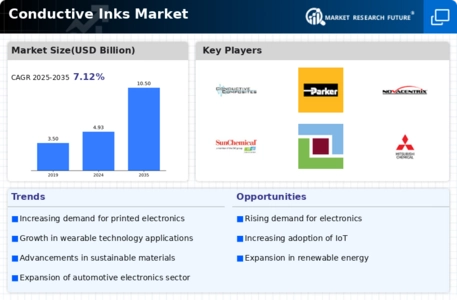
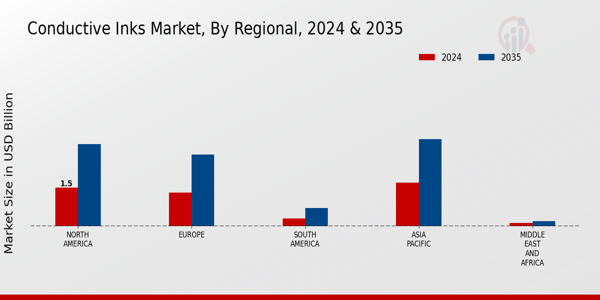
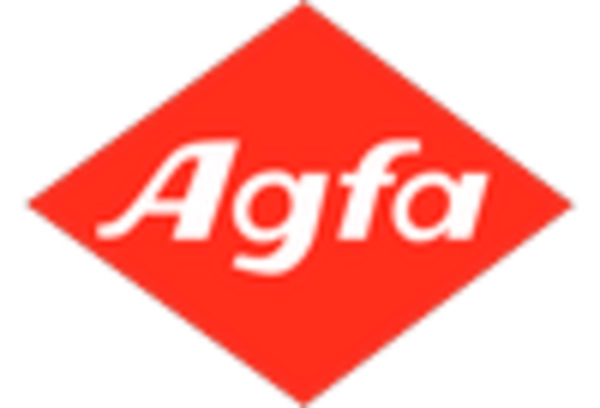
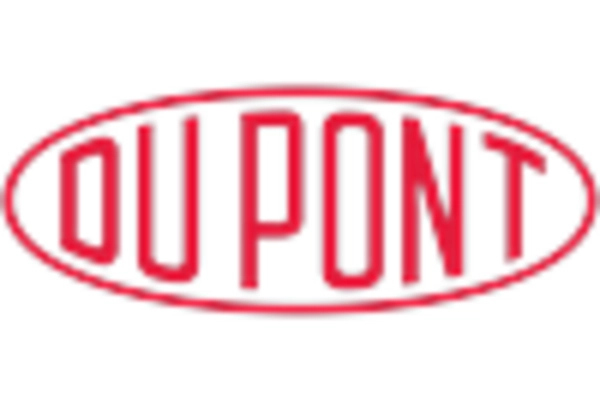
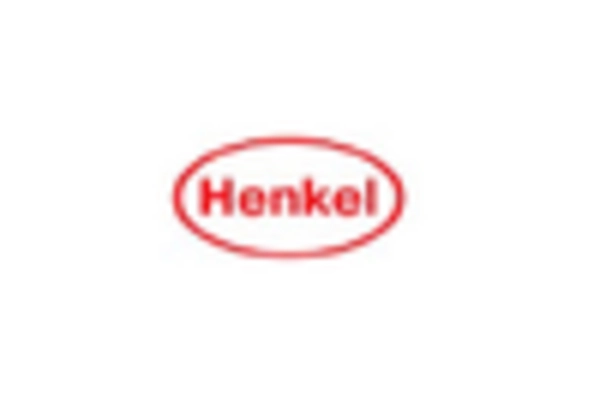
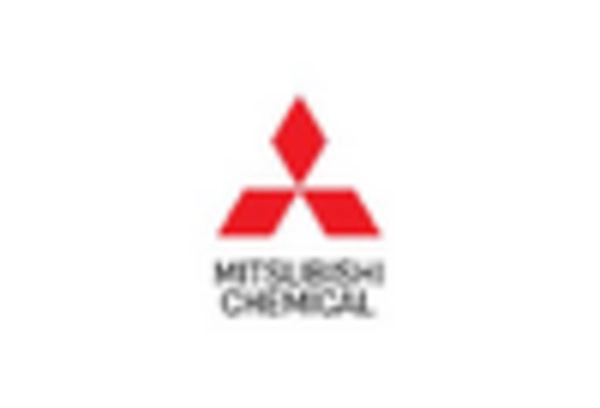
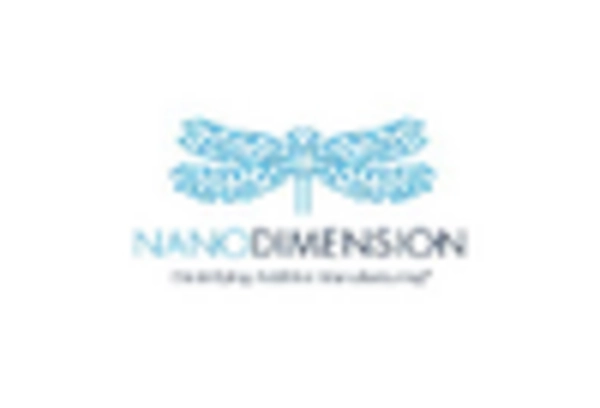
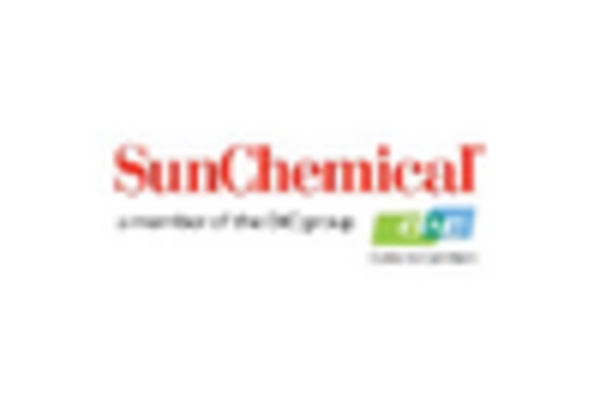

Leave a Comment